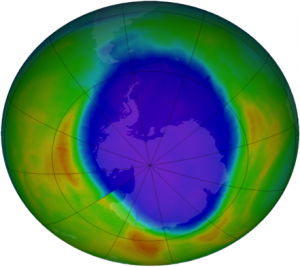Earth Sciences Monitoring Ozone Hole
October 28, 2016

The hole in Earth’s ozone layer that forms over Antarctica each September grew to about 8.9 million square miles in 2016 before starting to recover, according to scientists from NASA and the National Oceanic and Atmospheric Administration (NOAA) who monitor the annual phenomenon. “This year we saw an ozone hole that was just below average size,” said Paul A. Newman, chief scientist for Earth Sciences at NASA’s Goddard Space Flight Center in Greenbelt, Maryland. “What we’re seeing is consistent with our expectation and our understanding of ozone depletion chemistry and stratospheric weather.” At its peak on Sept. 28, 2016, the ozone hole extended across an area nearly three times the size of the continental United States. The average area of the hole observed since 1991 has been roughly 10 million square miles. Team ADNET supports these studies at GSFC through science data analysis, processing of data from EOS Aura and Suomi NPP spacecraft, and through outreach publicizing science results. Excerpted from: http://www.nasa.gov/feature/Goddard/2016/antarctic-ozone-hole-attains-moderate-size/
Comments are closed.
-
Article Details:
Posted on: Friday, October 28th, 2016
Posted in: News, SESDA News
Subscribe: RSS 2.0
Comments: No Responses -
Recent News:
